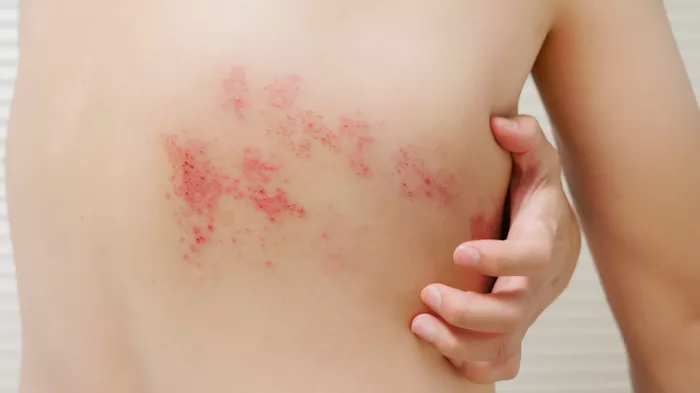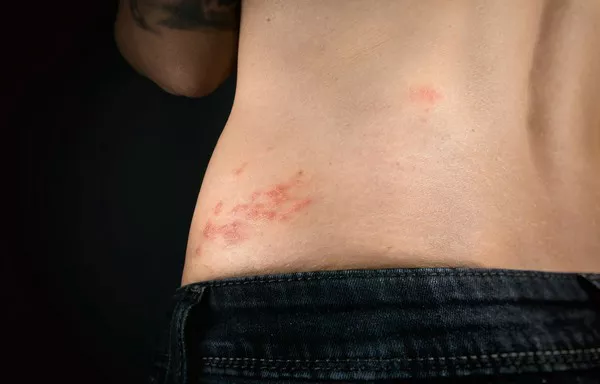Shingles, caused by the varicella-zoster virus (VZV), manifests as a painful rash that typically appears on one side of the body. The virus remains dormant in nerve tissue after an individual has had chickenpox, and it can reactivate years later as shingles. The progression of the shingles rash follows distinct stages, each characterized by unique symptoms and developments. Understanding these stages is crucial for recognizing and managing this condition effectively.
Stage 1: Prodromal Phase
The onset of shingles often begins with a prodromal phase, which precedes the appearance of the rash. This stage can last for several days and is marked by symptoms such as:
1. Pain and Sensitivity: Individuals may experience pain, tingling, burning, or itching in the affected area. This discomfort can be quite intense and is typically localized to one side of the body.
2. Flu-like Symptoms: Some people may develop fever, fatigue, headache, and general malaise during this phase.
The prodromal phase is critical as it signals the reactivation of the virus within the nerve ganglia. Prompt recognition of these early symptoms can aid in early intervention and symptom management.
Stage 2: Development of the Rash
Following the prodromal phase, the characteristic shingles rash begins to appear. This rash is distinctive and progresses through several recognizable stages:
1. Redness and Inflammation: Initially, the affected area becomes red and inflamed as the virus begins to replicate in the nerve ganglia and travel along the nerve fibers to the skin.
2. Formation of Blisters: Within a few days, the redness develops into fluid-filled blisters. These blisters are typically localized and clustered, following the path of the affected nerve. They are often painful and can be quite sensitive to touch.
3. Maturation of Blisters: Over the course of about 7-10 days, the blisters continue to fill with fluid and may merge together. The skin overlying the blisters can become very tender.
Stage 3: Peak of Symptoms
During this stage, which typically occurs within 10-14 days of the rash’s onset, the symptoms of shingles are at their most intense:
1. Pain: The pain associated with shingles can be severe, ranging from aching and burning to stabbing or shooting sensations. This pain is often described as sharp and can persist even after the rash has healed.
2. Itching and Discomfort: The blisters can be extremely itchy and uncomfortable, adding to the overall distress experienced by the individual.
3. Systemic Symptoms: Some individuals may continue to experience flu-like symptoms such as fever, fatigue, and headache.
The peak of symptoms is the most challenging phase of shingles, requiring aggressive management of pain and discomfort to improve quality of life during recovery.
Stage 4: Crusting and Healing
As the rash enters the healing phase, the blisters start to dry out and form crusts. This typically occurs around 2-3 weeks after the rash first appears. During this stage:
1. Crusting: The fluid-filled blisters gradually dry up, forming crusts that eventually fall off. It’s crucial not to pick or scratch at these crusts to prevent secondary infections.
2. Resolution of Symptoms: As the rash heals, the pain and discomfort begin to diminish. However, some individuals may experience residual nerve pain, known as postherpetic neuralgia (PHN), which can persist for weeks or even months after the rash resolves.
Stage 5: Postherpetic Neuralgia (PHN)
For some individuals, the pain associated with shingles can continue long after the rash has healed. This condition, known as postherpetic neuralgia (PHN), occurs when damaged nerve fibers send exaggerated pain signals to the brain. Symptoms of PHN include:
1. Persistent Pain: Intense and often debilitating pain in the area where the shingles rash occurred.
2. Sensitivity: Increased sensitivity to touch, temperature changes, or pressure in the affected area.
3. Continued Treatment: Management of PHN may involve medications such as anticonvulsants, antidepressants, or topical agents to help alleviate pain and improve quality of life.
Conclusion
Understanding the stages of the shingles rash is vital for timely recognition and management of this condition. Early intervention during the prodromal phase can help mitigate the severity of symptoms and reduce the risk of complications such as PHN. If you suspect you have shingles or are experiencing symptoms of this condition, consult a healthcare professional promptly for proper diagnosis and treatment. With appropriate care and management, individuals can recover from shingles and minimize the impact of its associated symptoms.
Related Topics:
























